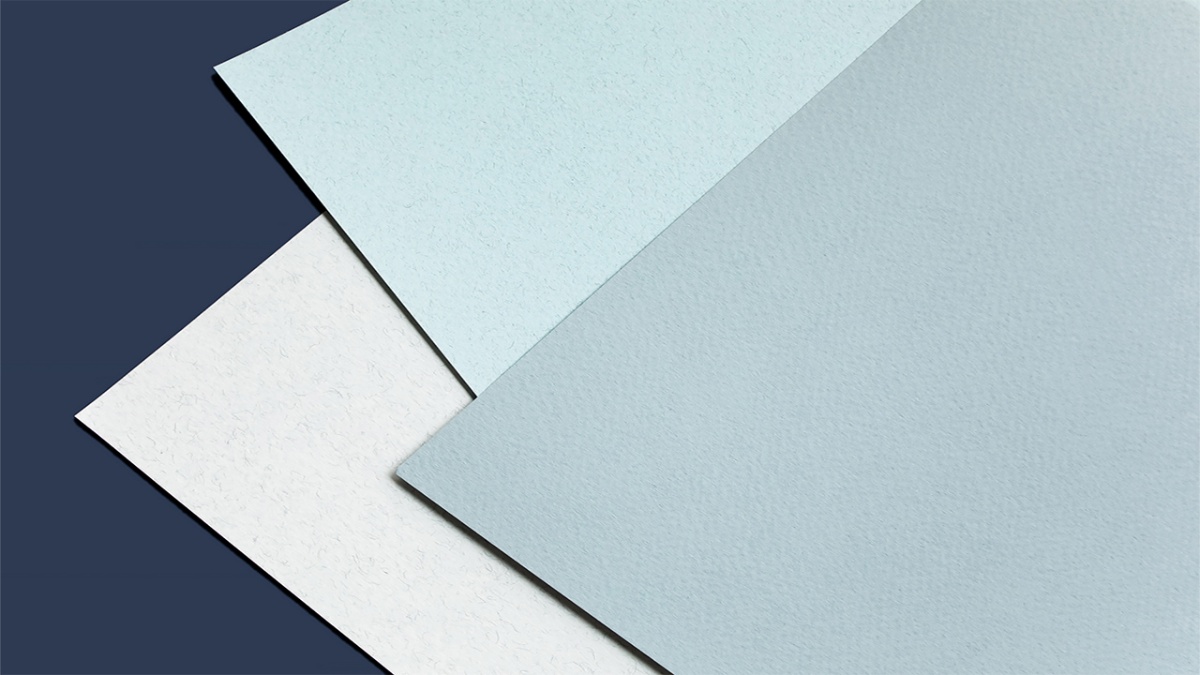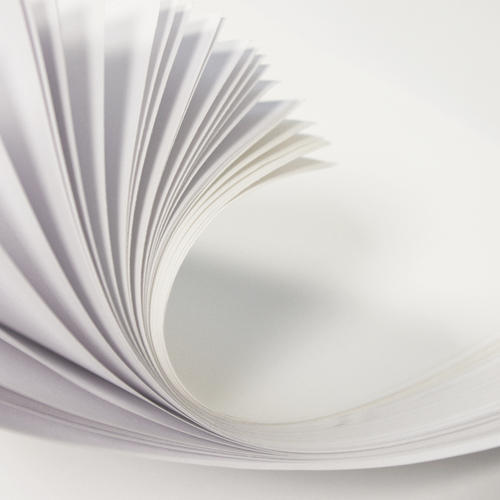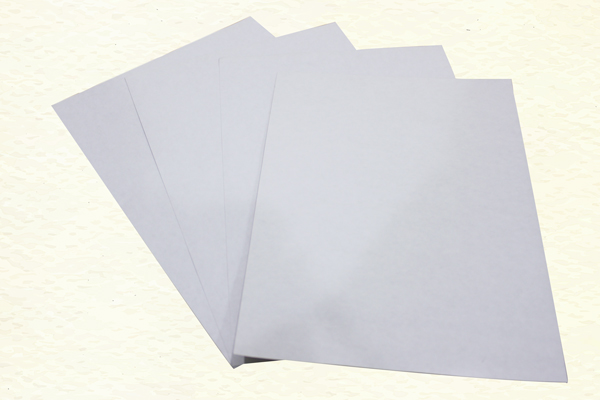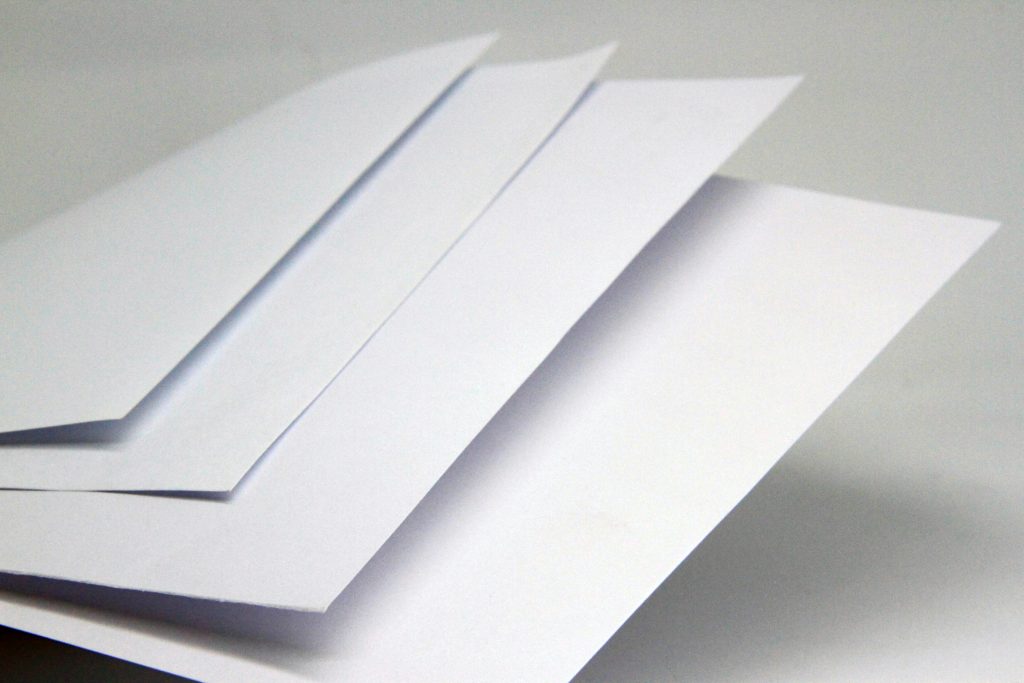What Are the Different Woodfree Paper Types Available?
Woodfree Paper Types for Various Printing Needs
Woodfree paper is a popular choice in the printing industry for its high-quality results and versatility. With different types available, it’s important to understand the characteristics and applications of each woodfree paper type to choose the right one for your specific printing needs. In this section, we will explore the different types of woodfree paper, their unique features, and their applications.
Uncoated Woodfree Paper
Uncoated woodfree paper, as the name suggests, does not have a coating on its surface. This type of paper offers a natural and organic look and feel. It is commonly used for books, notebooks, letterheads, and other printed materials where a rustic or vintage aesthetic is desired. Uncoated woodfree paper is also preferred for projects that require readability and good ink absorption.
Coated Woodfree Paper
Coated woodfree paper, on the other hand, has a glossy or matte coating applied to its surface. The coating enhances the paper’s smoothness, brightness, and color vibrancy. Glossy woodfree paper is commonly used in advertising materials, such as brochures, catalogs, and magazines, as it provides sharp, vibrant images and a polished appearance. Matte woodfree paper, on the other hand, offers a more subdued and elegant finish, making it suitable for high-end projects like annual reports and art books.
Offset Woodfree Paper
Offset woodfree paper is widely used for commercial printing purposes, including books, magazines, newspapers, and catalogs. It is known for its excellent printing properties, such as high opacity, smoothness, and ink receptivity. Offset woodfree paper is typically uncoated and provides a clean and crisp appearance.
Glossy Woodfree Paper
Glossy woodfree paper is ideal for projects that require vibrant and glossy prints. It is commonly used for high-quality marketing materials, such as brochures, flyers, and posters. The smooth surface of glossy woodfree paper allows for sharp and colorful images, making the prints visually appealing and eye-catching.
In summary, woodfree paper types offer a wide range of options for various printing needs. Whether you are looking for a natural and rustic look with uncoated woodfree paper, a glossy and vibrant finish with coated woodfree paper, or a sophisticated and subtle appearance with silk or matt woodfree paper, there is a type of woodfree paper that will suit your specific project requirements.
Remember to consider factors such as print quality, readability, project-specific applications, environmental impact, and price when choosing the right woodfree paper for your printing needs. Each type of woodfree paper has its own unique characteristics and advantages, so take the time to research and select the one that best aligns with your goals and preferences.
Choosing the Right Woodfree Paper for Your Project
When it comes to choosing the right paper for your printing project, there are several factors to consider. The type of paper you choose can greatly impact the print quality, the environmental impact, and the overall aesthetics of your project. In this section, we will explore the different considerations that should be taken into account when selecting woodfree paper for your specific needs.
Thickness and Weight Considerations
The first factor to consider when choosing woodfree paper is the thickness and weight of the paper. Different printing projects require different paper thicknesses for optimal results. Thinner paper, such as 60gsm, is commonly used for everyday printing needs like documents and flyers. On the other hand, thicker paper, such as 250gsm or higher, is often used for high-quality prints like business cards or invitations. It is important to choose a paper weight that is suitable for your specific project to ensure the best possible results.
Opacity and Print Quality Factors
Opacity is another important consideration when selecting woodfree paper. Opacity refers to how much light can pass through the paper, affecting the visibility of prints on both sides of the paper. Woodfree paper is known for its high opacity, which means that prints on one side will not show through on the other side. This is especially important for double-sided prints, as it prevents the “see-through” effect and ensures a professional finish. Additionally, the absence of lignin in woodfree paper helps maintain a bright white color over time, ensuring the longevity of your prints.
Environmental Impact Analysis
Environmental considerations should also be taken into account when choosing woodfree paper. Woodfree paper is made without lignin, which is responsible for the yellowing and degradation of paper over time. This makes it an ideal choice for archival purposes and projects that require long-term durability. However, it is important to note that the production of woodfree paper involves a chemical bleaching process, which can have environmental implications. Some manufacturers use an Elemental Chlorine-Free (ECF) bleaching process, which minimizes the impact on the environment. When selecting woodfree paper, it is important to look for certifications such as Forest Stewardship Council (FSC) or ISO 9706, which ensure sustainable and environmentally friendly manufacturing practices.
Project-specific Applications
Different woodfree paper types have specific applications for which they are best suited. Understanding the characteristics of each paper type can help you choose the right one for your project. Here are some commonly used woodfree paper types and their applications:
| Woodfree Paper Type | Applications |
|---|---|
| Uncoated Woodfree Paper | Books, notebooks, letterheads, printed materials with a rustic or vintage aesthetic |
| Coated Woodfree Paper | Advertising materials, brochures, catalogs, magazines, annual reports, art books |
| Offset Woodfree Paper | Commercial printing purposes, books, magazines, newspapers, catalogs |
| Glossy Woodfree Paper | High-quality marketing materials, brochures, flyers, posters |
In conclusion, woodfree paper types offer a wide range of options for various printing needs. Whether you are looking for a natural and rustic look with uncoated woodfree paper, a glossy and vibrant finish with coated woodfree paper, or a clean and crisp appearance with offset woodfree paper, there is a type of woodfree paper that will suit your specific project requirements.
Remember to consider factors such as thickness and weight, opacity and print quality, environmental impact, and project-specific applications when choosing the right woodfree paper for your printing needs. Each type of woodfree paper has its own unique characteristics and advantages, so take the time to research and select the one that best aligns with your goals and preferences.
Woodfree Paper Alternatives and Sustainable Choices
Woodfree paper, although widely used and popular, is not the only option when it comes to sustainable paper choices. There are various alternative fibers and materials that can be used in making paper, each with its own unique characteristics and environmental benefits. In this section, we will explore some of these alternatives and discuss their applications and advantages.
What are some alternative fibers used in making woodfree paper?
Woodfree paper is traditionally made from wood pulp, but there are several alternative fibers that can be used instead. These fibers come from various sources, including recycled paper, cotton, bamboo, and linen. By utilizing these alternative fibers, we can reduce our reliance on trees and promote more sustainable paper production.
- Recycled paper: One of the most common and readily available alternatives is recycled paper. Recycled paper is made from post-consumer waste, such as old newspapers, office paper, and packaging. By using recycled fibers, we can reduce the demand for virgin wood pulp and minimize the environmental impact of paper production.
- Cotton: Cotton paper is made from the fibers of cotton plants, which are a renewable resource. It is known for its durability and high-quality feel. Cotton paper is often used for stationery, legal documents, and fine art printing.
- Bamboo: Bamboo paper is gaining popularity as a sustainable alternative to traditional wood-based paper. Bamboo is a fast-growing plant that does not require replanting after harvest, making it highly renewable. Bamboo fibers are strong and produce paper with excellent printability. Bamboo paper is often used for printing books, magazines, and packaging.
- Linen: Linen paper is made from the fibers of flax plants. It has a unique texture and is often used for specialty printing, such as wedding invitations and high-end packaging. Linen fibers are strong and produce paper with good archival properties.
How does recycled paper contribute to sustainability?
Recycled paper plays a crucial role in promoting sustainability in the paper industry. By using recycled fibers instead of virgin wood pulp, we can significantly reduce the environmental impact of paper production. Here are some of the ways recycled paper contributes to sustainability:
- Conservation of Resources: Recycled paper minimizes the demand for virgin wood pulp, which requires the harvesting of trees. By using recycled fibers, we can conserve forests and biodiversity.
- Energy and Water Savings: Producing recycled paper consumes less energy and water compared to manufacturing paper from virgin fibers. Recycling paper requires fewer chemical processes and less water usage, leading to significant energy and water savings.
- Waste Reduction: By diverting waste paper from landfills and recycling it into new paper products, we can reduce the amount of waste that ends up in our environment. This helps to minimize pollution and conserve landfill space.
- Carbon Footprint Reduction: The production of recycled paper results in lower emissions of greenhouse gases compared to paper made from virgin fibers. This is because recycling paper requires less energy and emits fewer pollutants, contributing to the overall reduction of carbon footprint.
- Circular Economy: Using recycled paper supports the concept of a circular economy, where materials are recycled and reused rather than discarded. By closing the loop and recycling paper, we can extend the lifespan of materials and reduce the need for raw material extraction.
- Consumer Awareness: Choosing products made from recycled paper raises consumer awareness about sustainable practices and encourages the adoption of eco-friendly alternatives.
What are the benefits of using bamboo paper for printing?
Bamboo paper offers several advantages over traditional wood-based paper, making it an excellent choice for sustainable printing. Here are some of the benefits of using bamboo paper:
- Renewable Resource: Bamboo is one of the fastest-growing plants on Earth, capable of reaching maturity in just a few years. Unlike trees, which can take decades to grow, bamboo can be harvested in a short period, making it highly renewable and sustainable.
- Low Environmental Impact: Bamboo cultivation requires less water, fertilizer, and pesticides compared to traditional crops. It also has a high carbon absorption rate, helping to reduce greenhouse gas emissions.
- Strength and Durability: Bamboo fibers are known for their strength and durability, making bamboo paper resilient and long-lasting. This ensures that printed materials made from bamboo paper can withstand wear and tear, contributing to sustainable practices by reducing the need for frequent replacements.
- Excellent Printability: Bamboo paper produces excellent print results, with vibrant colors and sharp detail. Its smooth surface allows for high-quality images and text, making it suitable for various printing applications, including books, magazines, and promotional materials.
- Versatility: Bamboo paper is available in different finishes and weights, allowing for versatility in design and usage. It can be used for everything from business cards and stationery to packaging and signage.
By choosing bamboo paper for printing, we can support sustainable practices, promote the use of renewable resources, and reduce our environmental footprint.
In conclusion, woodfree paper alternatives provide sustainable choices for various printing needs. Recycled paper, cotton paper, bamboo paper, and linen paper offer environmentally friendly options that can help reduce the industry’s reliance on trees and promote more sustainable paper production. By considering the characteristics and applications of these alternative fibers, we can make informed choices and contribute to a more sustainable future.
Now, let’s move on to the next task and insert some relevant tables to visualize the data from this blog post.
FAQs about Woodfree Paper Types:
What is the formula for calculating precision and recall in the context of choosing woodfree paper types?
Precision =tp/(tp+fp) and recall =tp/(tp+fn).
What are the unique features and applications of uncoated woodfree paper?
Uncoated woodfree paper offers a natural and organic look and feel, suitable for books, notebooks, letterheads, and projects needing good ink absorption.
In what types of printing projects is glossy woodfree paper commonly used?
Glossy woodfree paper is commonly used in advertising materials, such as brochures, catalogs, and magazines, due to its sharp, vibrant images and polished appearance.
How does silk woodfree paper differ from glossy paper and where is it typically used?
Silk woodfree paper offers a more subtle and sophisticated finish compared to glossy paper and is often used in promotional materials, magazines, and high-end catalogs.
What factors should be considered when selecting woodfree paper for a printing project?
Consider thickness and weight, opacity and print quality, environmental impact, project-specific applications, brand and quality variations, and price when choosing woodfree paper.
In summary, Woodfree paper offers various types like uncoated, glossy, offset, silk, and matt. Consider factors like thickness, print quality, and eco-impact when choosing. Sustainable options include bamboo, cotton, recycled, and linen papers, helping the environment. Make informed choices based on your project needs and environmental goals.





